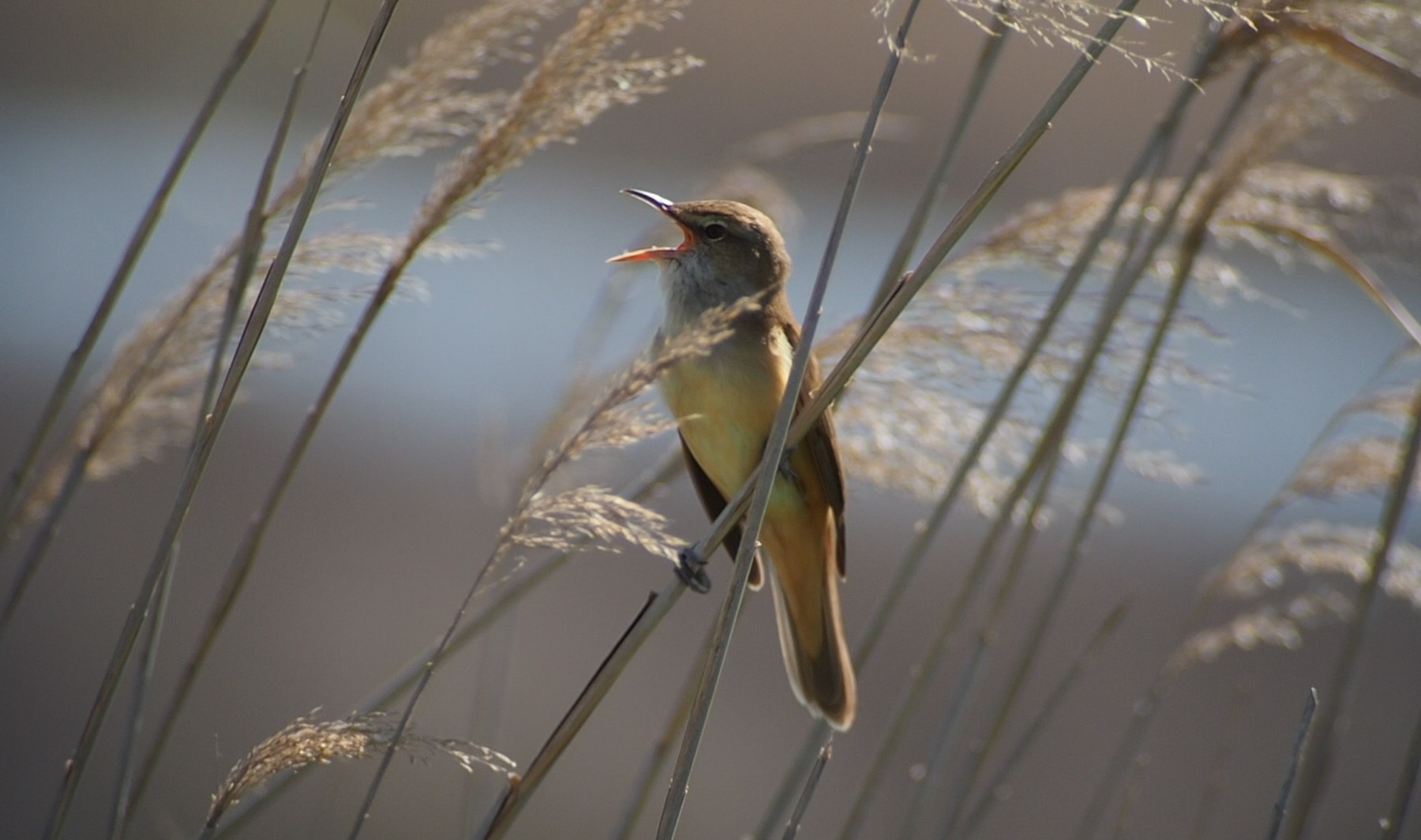Family: Acrocephalidae
Genus: Acrocephalus
A robust warbler resembling the Eurasian Reed-Warbler in coloration but notably larger, characterized by a proportionately massive head, a hefty bill with a dark tip, and a broad, pale eyebrow. During breeding season, it inhabits reed beds, maneuvering through the thickets in brief flights and bending stems while perched. Outside of breeding periods, it occupies various habitats, including wet marshy areas and drier landscapes such as agricultural fields, savannas, and low scrubby growth. Its song, though brief, is remarkably loud and unforgettable, featuring repeated phrases like “karra-karra-karra gurk gurk gurk chirrr-chirrr karra karra.” Its call is a distinctive high-pitched “krrrrr”.
Photo: Look how gorgeous [myshortcode]
Description [myshortcode]

1. Geographic Range:
The great reed warbler has a vast geographic range, with its breeding grounds extending across a wide area from Europe to central Asia. Its breeding range includes countries such as Spain, France, Italy, Hungary, Ukraine, Russia, Kazakhstan, and Mongolia. It reaches as far east as western China. In Africa, it is found in countries such as Egypt, Sudan, Ethiopia, and Somalia during the non-breeding season.
2. Breeding Habitat:
This bird species inhabits a variety of wetland habitats for breeding, including reed beds, marshes, swamps, and the edges of lakes and rivers. It shows a preference for areas with tall, dense vegetation, particularly large reed beds, in which it builds its cup-shaped nest.
3. Migration:
The great reed warbler is a long-distance migrant, spending the winter months in sub-Saharan Africa. During migration, it travels through the Middle East and eastern Africa to reach its wintering grounds. It migrates southwards in the late summer, with many individuals crossing the Sahara Desert to reach their wintering areas.
4. Non-breeding Range:
During the non-breeding season, the great reed warbler occupies a broad non-breeding range in Africa, primarily within the savannas, floodplains, and wetland areas of countries such as Nigeria, Cameroon, Chad, and South Africa. It is known to utilize a variety of habitats during this time, including reed beds, papyrus swamps, and other dense vegetation near water.
5. Conservation Status:
The great reed warbler is considered a species of Least Concern by the International Union for Conservation of Nature (IUCN) due to its large and apparently stable population. However, like many wetland-dependent bird species, it faces threats from habitat loss and degradation, particularly in its breeding and wintering areas.
Overall, the great reed warbler is a highly adaptable migratory bird with a broad distribution across Europe, Asia, and Africa. Its ability to occupy diverse wetland habitats during both the breeding and non-breeding seasons contributes to its resilience in the face of environmental changes.
Please note that the information provided has been synthesized and is based on available knowledge about the great reed warbler’s distribution as of the time of writing. For the most current and comprehensive information, it is recommended to consult scientific literature and conservation organizations that specialize in avian ecology and conservation.\




